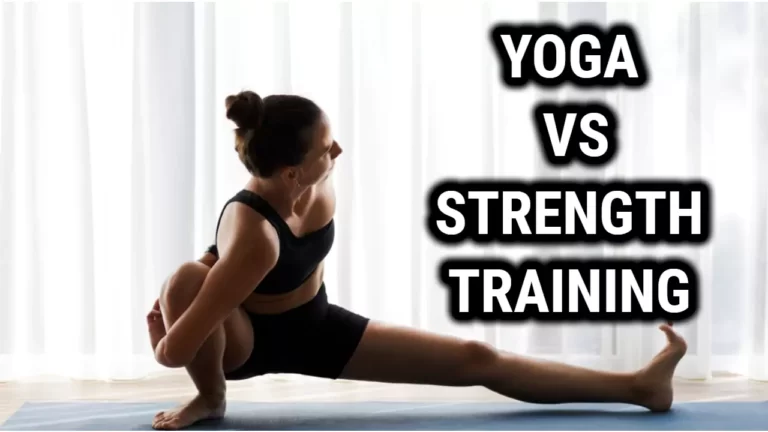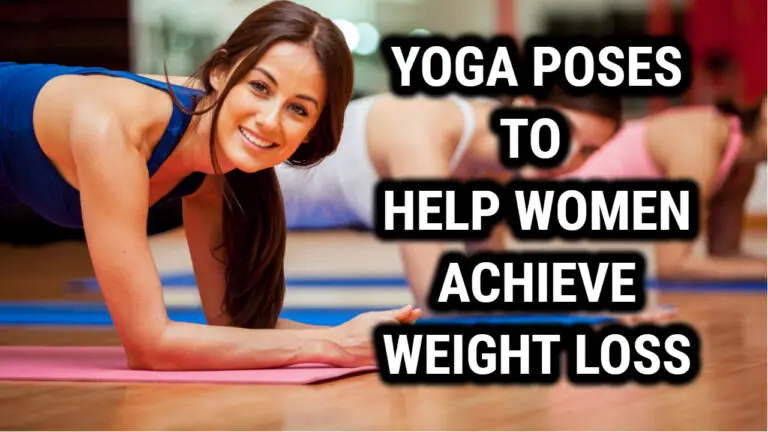A Comparison of Pilates Vs Yoga For Weight Loss Success

Pilates and yoga are two popular forms of exercise that have been gaining in popularity in recent years. Both Pilates and yoga offer a range of benefits for people looking to lose weight, including improved fitness, increased calorie burn, and support for weight loss goals.
In this article, we will compare Pilates and yoga for weight loss, looking at their different forms, exercise benefits, and diet recommendations.
We will also discuss the benefits of Pilates and yoga for weight loss, as well as some of the challenges to consider when using these forms of exercise for weight loss. Finally, we will provide recommendations for choosing the right program for your needs.
Definition of Pilates and Yoga:
Pilates and yoga are two forms of exercise that originated in the early 20th century. Pilates was developed by Joseph Pilates as a method of physical conditioning that emphasizes low-impact, controlled movements that engage the core muscles and improve posture, balance, and flexibility.
Yoga, on the other hand, is a thousands of year old practice that originated in India and involves a wide range of movements, including standing and seated poses, twists, and inversions, which can help improve strength, endurance, and overall mobility.
Overview of Weight Loss Benefits of Pilates and Yoga:
Both Pilates and yoga offer a range of benefits for people looking to lose weight. Both forms of exercise can help burn calories, improve fitness, and support weight loss goals.
Pilates and yoga can also provide a range of other benefits, such as improved posture, balance, and flexibility, as well as reduced stress and improved mental focus and clarity.
Therefore, for anyone wishing to include exercise in their quest to lose weight, Pilates and yoga can be useful tools.
Comparing Pilates and Yoga for Weight Loss
Different Forms of Pilates and Yoga:
Pilates and yoga come in a variety of forms, each with its own unique characteristics and benefits. Some common forms of Pilates include mat Pilates, which uses bodyweight and small props such as balls and bands to provide resistance, and equipment-based Pilates, which uses specialized machines such as the reformer to provide a more intense workout.
Contrarily, there are various other types of yoga, including Hatha, Vinyasa, and Bikram, each of which has its own set of postures, motions, and sequences.
Exercise Benefits of Pilates and Yoga:
Both Pilates and yoga can provide a range of exercise benefits that can support weight loss. Pilates focuses on low-impact, controlled movements that engage the core muscles and improve posture, balance, and flexibility.
Yoga, by contrast, entails a greater variety of motions that can enhance flexibility, strength, and endurance. Both Pilates and yoga can also provide a full-body workout that can burn calories, boost metabolism, and support weight loss goals.
Diet Recommendations for Pilates and Yoga:
Along with exercise, diet is also an important factor to consider when it comes to weight loss. Both Pilates and yoga can be combined with a healthy diet to support weight loss goals. This might include eating a balanced diet that is rich in fruits, vegetables, lean proteins, and healthy fats, and avoiding processed foods and sugary drinks.
Furthermore, since missing meals can result in overeating and undermine weight loss efforts, it’s crucial to stay hydrated.
Benefits of Pilates and Yoga for Weight Loss
Improved Body Composition:
Both Pilates and yoga can help improve body composition by increasing muscle mass and reducing body fat. Pilates, with its focus on low-impact, controlled movements, can help build core strength and improve posture, which can make the body appear more toned and defined.
Yoga, with its wider range of movements and poses, can help improve overall strength and flexibility, which can also contribute to a more toned and defined physique.
Strengthened Core Muscles:
Pilates is well known for its emphasis on strengthening the core muscles, including the abdominals, obliques, and lower back. Strong core muscles are essential for maintaining good posture and balance, and can also help support the spine and protect against back pain.
Yoga, while it does not focus specifically on the core muscles, can also help strengthen these muscles through a variety of poses and movements that engage the core.
Improved Flexibility:
Both Pilates and yoga can help improve flexibility, which can make daily activities easier and reduce the risk of injury. Pilates, with its focus on low-impact, controlled movements, can help improve flexibility in the joints, muscles, and connective tissues, while yoga, with its wider range of movements and poses, can help improve flexibility in the spine, hips, and shoulders.
Improved flexibility can also make it easier to perform a wider range of exercises, which can support weight loss efforts
Challenges of Pilates and Yoga for Weight Loss
Time Commitment:
One potential challenge of using Pilates and yoga for weight loss is the time commitment involved. Both forms of exercise require regular practice to see results, and this can be difficult for people with busy schedules.
Pilates and yoga classes typically last for an hour or more, and it’s recommended to practise at least 3-4 times per week to see improvements.
Finding the time to fit these exercises into a busy schedule can be a challenge, and may require some planning and scheduling to make it work.
Cost:
Another potential challenge of using Pilates and yoga for weight loss is the cost involved. Both forms of exercise can be expensive, especially if you choose to take classes at a gym or studio. Pilates classes, in particular, can be expensive due to the specialised equipment used, such as the reformer and Cadillac.
Yoga classes, while generally less expensive, can still add up over time, especially if you choose to take classes with a private instructor or at a high-end studio.
Risk of Injury:
Another potential challenge of using Pilates and yoga for weight loss is the risk of injury. Both forms of exercise involve a range of movements and poses that, if performed incorrectly, can lead to injury.
Pilates, with its focus on low-impact, controlled movements, can be particularly challenging for beginners, and it’s important to start slowly and work with a qualified instructor to ensure proper form and technique.
Yoga, while generally considered to be low-impact, can also pose a risk of injury, especially if poses are performed incorrectly or with excessive force. It’s important to listen to your body and avoid pushing yourself too hard, and to work with a qualified instructor to ensure that you are practising safely and avoiding injury.
Choosing the right program for your needs
Consider Your Fitness Level:
When choosing between Pilates and yoga for weight loss, it’s important to consider your current fitness level and goals. If you are a beginner, or if you have any pre-existing medical conditions, Pilates may be a good choice, as it is generally considered to be a low-impact form of exercise that is suitable for people of all fitness levels.
Yoga can be more challenging than some other forms of exercise and may be better suited for individuals who are already physically fit and have some experience with exercise.
Consider Your Goals:
It’s also important to consider your weight loss goals when choosing between Pilates and yoga. If your main goal is to improve your overall fitness and build strength and endurance, yoga may be a better choice, as it involves a wider range of movements and poses that can provide a full-body workout.
If your main goal is to improve your posture, balance, and core strength, Pilates may be a better choice, as it focuses specifically on these areas. Ultimately, the best choice will depend on your individual goals and preferences.
Also Read: Doing Yoga Before Sleep For Weight Loss
Conclusion
In conclusion, Pilates and yoga are two popular forms of exercise that can provide a range of benefits for people looking to lose weight. Both forms of exercise can help burn calories, improve fitness, and support weight loss goals.
However, Pilates and yoga differ in their focus and approach, with Pilates focusing on low-impact, controlled movements that engage the core muscles, and yoga involving a wider range of movements and poses that can improve overall strength and flexibility.
Both forms of exercise have their own unique benefits and challenges, and the right choice will depend on your individual fitness level, goals, and preferences.
Ultimately, the best way to lose weight with Pilates or yoga is to choose a program that is right for you and commit to regular practice. With dedication and consistency, you can achieve your weight loss goals and enjoy the many benefits of Pilates and yoga.





